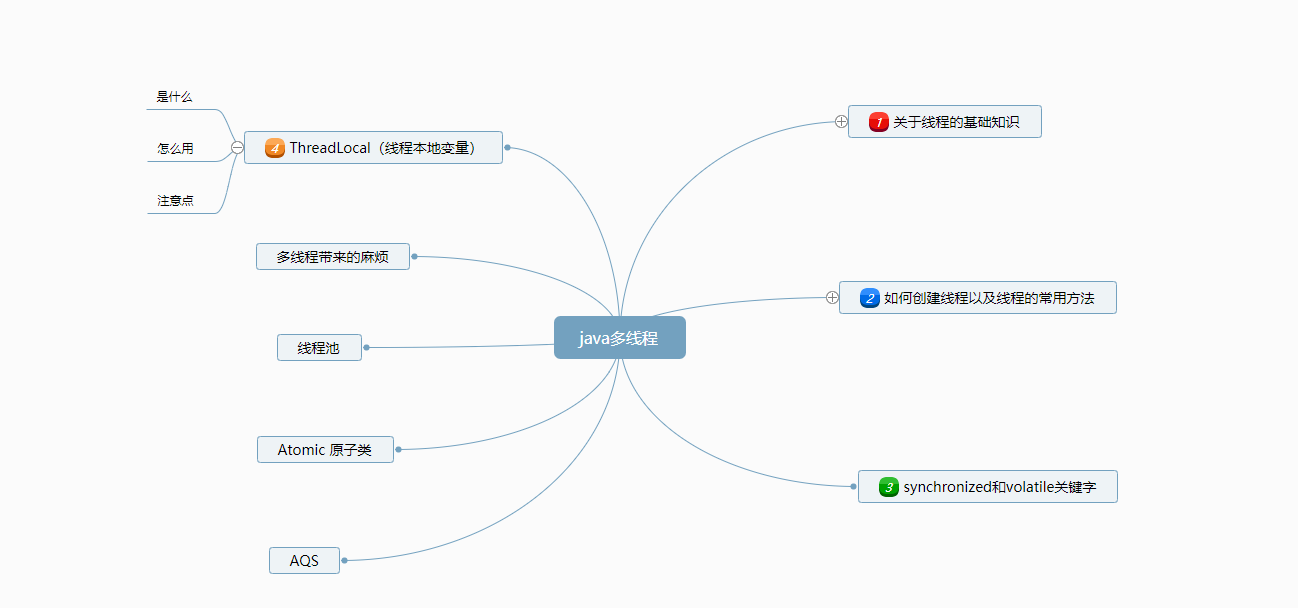
1.ThreadLocal是什么
ThreadLocal翻译过来本地线程?实则不然,ThreadLocal类实际上是给多线程中的每个线程存放本地变量(针对于每一个线程)的类,就比如,水表,ThreadLocal类给每一个用户单独的水表。
每个线程可以通过set()/get()方法来获取属于自己的值
set方法:
public void set(T value) { Thread t = Thread.currentThread(); ThreadLocalMap map = getMap(t); if (map != null) { map.set(this, value); } else { createMap(t, value); } }
可以发现,set方法是把当前线程作为key,存储的值作为value,用ThreadLocalmap来储存的。
get()方法:
public T get() { Thread t = Thread.currentThread(); ThreadLocalMap map = getMap(t); if (map != null) { ThreadLocalMap.Entry e = map.getEntry(this); if (e != null) { @SuppressWarnings("unchecked") T result = (T)e.value; return result; } } return setInitialValue(); }
与set对应,从map中通过key(当前线程)取出value。
通过上面可以发现,所谓的线程本地变量,是放在每个线程的ThreadLoaclMap里面的。
2.一个小例子
public class ThreadLocalTest { public static ThreadLocal<Integer> aInt = new ThreadLocal<>(); public Integer getInt(){ return aInt.get(); } public static class aThread implements Runnable{ @Override public void run(){ ThreadLocalTest a = new ThreadLocalTest(); a.aInt.set(1); while(a.getInt()!=5){ System.out.print(Thread.currentThread()+":"); System.out.println(a.getInt()); a.aInt.set(a.aInt.get()+1); } } } public static void main(String[] args) { aThread at = new aThread(); Thread a= new Thread(at); Thread b= new Thread(at); a.start(); b.start(); } }
结果:
Thread[Thread-0,5,main]:1 Thread[Thread-0,5,main]:2 Thread[Thread-0,5,main]:3 Thread[Thread-0,5,main]:4 Thread[Thread-1,5,main]:1 Thread[Thread-1,5,main]:2 Thread[Thread-1,5,main]:3 Thread[Thread-1,5,main]:4
3.需要注意的是,用完之后,最后在线程中调用remove()方法,因为ThreadLocalMap的key是弱引用,key是强引用,垃圾回收时,会把key去掉,结果就是一直存在一个key==null,value!=null的键值对。



 浙公网安备 33010602011771号
浙公网安备 33010602011771号